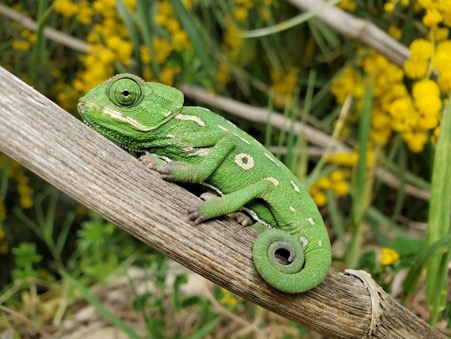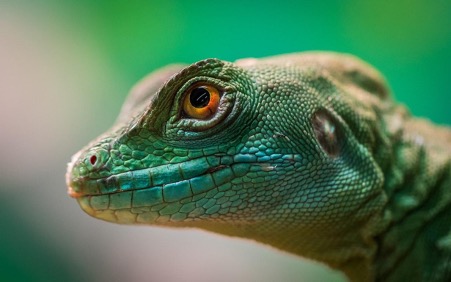Having a reptile pet can provide hours of enjoyment and companionship, but what is often overlooked is the responsibility that comes with owning these fascinating creatures. Creating the perfect habitat for your reptile friend isn’t as difficult as you may think — it takes research and dedication to give them their own safe corner of the world! By understanding your particular species’ needs, you can curate an environment filled with food, water sources, warmth, humidity levels, and decor sure to keep them healthy and happy. Ready to set up a home away from home for your cold-blooded cutie? Let’s explore some tips on how to create just that!
Connect with a verified veterinarian in minutes. Licensed vets are available 24/7 to answer your questions. No need to worry about your furry family member.

Setting Up The Habitat
Creating the perfect habitat for your pets might seem like a daunting task, but with a little bit of knowledge and some basic equipment, it can be achieved effortlessly. The substrate that you choose should be safe and suitable for your pet’s needs, while also providing proper drainage. Adding decorations such as rocks, caves or plants can help recreate your pet’s natural environment, allowing them a more comfortable home. Additionally, proper lighting and heating are essential to creating a comfortable habitat for your pets. By providing these basic essentials, you can guarantee that your pets feel right at home in their new environment, helping them to thrive and stay happy for years to come. Everything you need to know about your reptile pet can be found online or at your local pet store, so be sure to do your research! It can go a long way in providing the best possible care for your pet.
Providing Food And Water For Your Pet
As a responsible pet owner, it’s important to provide them with the proper nutrition and care. Reptiles, like all animals, require a balanced diet that includes proteins and vegetables. Live food is often the preferred type of feeding for reptiles, so be sure to research which foods are ideal for your pet’s species. In addition to providing a nutrient-rich diet, it is important to ensure that they have an adequate water source. Many reptiles require fresh clean water daily and use it to drink and bathe in, so making sure the water is changed regularly is key. Keeping a shallow dish of dechlorinated or distilled water in the enclosure can help keep your pet hydrated.

Review symptoms, medications & behavior to keep your pets healthy with a Vet Online in just minutes.
Ask a Vet Live NowCleaning And Maintenance Of The Habitat
Keeping your pet’s habitat clean is essential for their health and well-being. As a responsible pet owner, it is important to clean their enclosure at least once a week to help keep the environment healthy and safe for your reptile friend. When cleaning the habitat, make sure to use mild soap and warm water, as harsh chemicals can be dangerous for reptiles. Additionally, when you are replacing the substrate or decorations, make sure to use materials that are safe for your pet’s species. Regularly cleaning and maintaining the habitat not only helps keep your reptile healthy but also provides a stress-free environment for them!
Include Some Natural Elements In The Habitat
Adding natural elements to your pet’s habitat can make all the difference in providing a comfortable and relaxing home away from home. Adding items such as rocks, driftwood, plants, and moss can help to recreate their natural environment while also providing them with hiding places and spots to bask in the sun. Additionally, adding a few branches or twigs in the enclosure can provide your pet with a spot to climb and explore. Natural elements not only look great but also help provide your reptile with the best possible environment for them to live in! When choosing decorations for your pet’s habitat, make sure to research which ones are safe and non-toxic.

Creating the perfect habitat for your pet requires careful consideration and planning. From choosing the right size and type of habitat to providing food, water, and safety – it’s important to take all of these things into account when creating an environment your pet will thrive in. By setting up the habitat correctly with non-toxic substrates and decorations, incorporating appropriate lighting and heating, selecting natural elements such as plants and driftwood, cleaning regularly using supplies that won’t harm your pet, and ensuring a safe environment through cages or enclosures, you can create the ideal living space for your pet and make sure they stay healthy and happy. Your pet’s home should be more than just four walls – it should be a sanctuary they can enjoy spending time in. So whatever type of pet you own, take care in creating the perfect habitat so they have a place to call their own.
Connect with a verified veterinarian in minutes. Licensed vets are available 24/7 to answer your questions. No need to worry about your furry family member.

Tom
Tom has always loved to write since he was little - he wanted to be either a writer or a veterinary doctor, but he ended up being a professional writer while most of his works are based on animals. He was born in San Francisco but later moved to Texas to continue his job as a writer. He graduated from the University of San Francisco where he studied biotechnology. He is happily married and a soon to be father!
Review symptoms, medications & behavior to keep your pets healthy with a Vet Online in just minutes.
Ask a Vet Live Now
